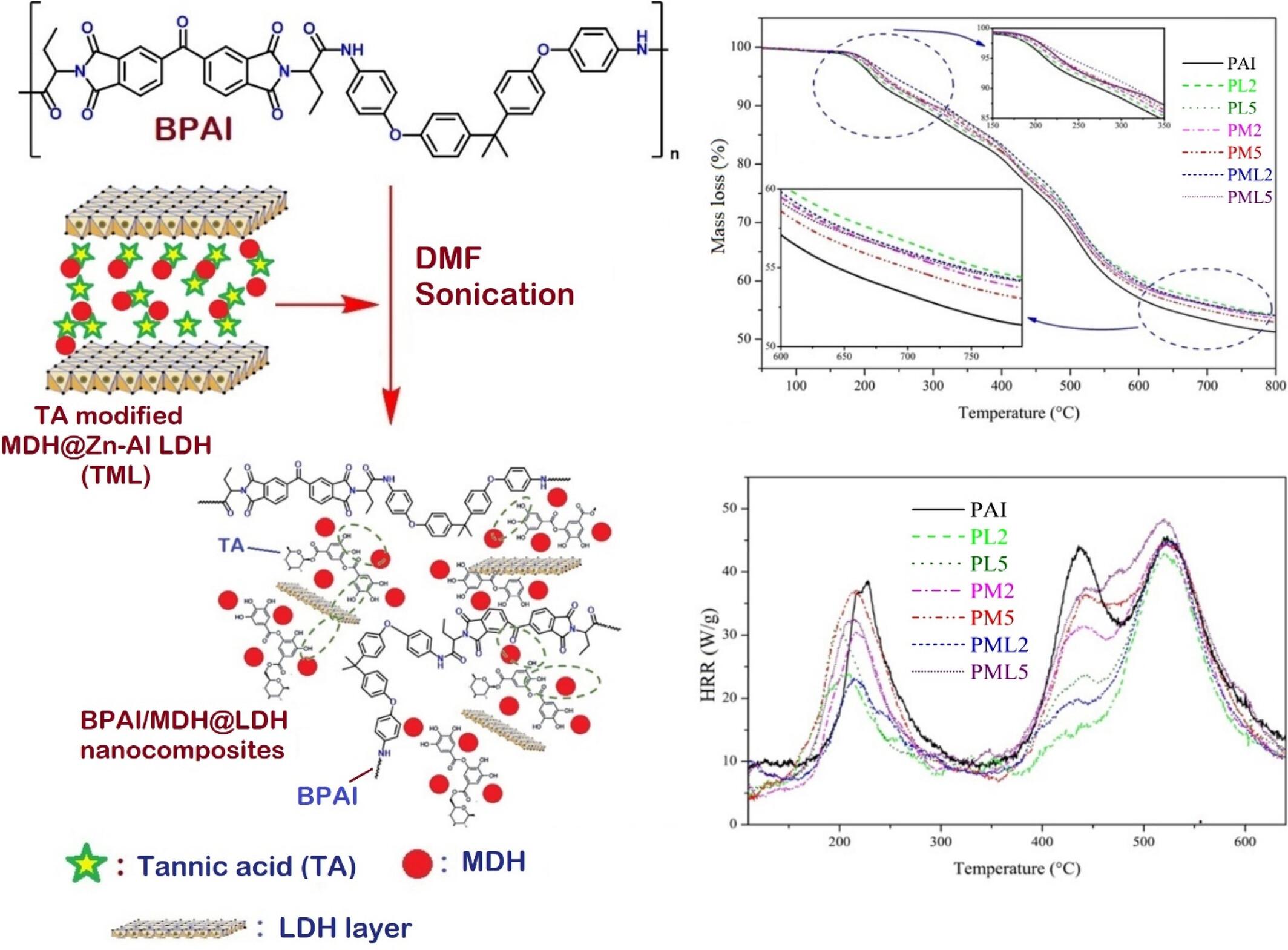A self-assembled tannic acid-modified Zn-Al LDH supported Mg(OH)2 nanofiller for the preparation of bisphenol A based poly(amide-imide) nanocomposites
Abstract
A multifunctional organic-inorganic nanofiller as a reinforcement of bisphenol A based poly(amide-imide) (BPAI) was assembled through the formation of electrostatic forces between tannic acid (TA)-modified Zn-Al LDH and Mg(OH)2 nanoparticles (MDH). TA-modified MDH@Zn-Al LDH (TML) was fabricated using an in-situ, one-step co-precipitation method. This involved the growth of LDH layers in the TA/MDH suspension. The manner of surface modification and the placement of MDH along with LDH in the TML structure were confirmed using FTIR, XRD, FE-SEM, and TGA. The results exhibited that the modification has resulted in an intercalated structure with increased interlayer spacing of LDH. The Poly(amide-imide) nanocomposites were prepared by reinforcing BPAI with TML using the solution casting method. The best thermal stability of the nanocomposites, in both air and N2 atmospheres, appeared in the sample with 2 wt% TML content. The T10 and Tmax values of this sample in the air atmosphere were found to be 45 and 37°C higher, respectively, than those of BPAI. Comparative to neat BPAI, the THR and HRC values of the mentioned sample were reduced by 43.6% and 45.7%, respectively. These results demonstrated the significant synergistic effect of the TML structure in enhancing the thermal and combustion resistance of BPAI.
Highlights
- Preparation of LDH on a Mg(OH)2/tannic acid as multifunctional nanofiller.
- Self-assembling nanofiller including tannic acid-modified LDH-supported MDH.
- A synthesized bisphenol A based poly(amide-imide) (BPAI).
- Effect of the nanofiller on the thermal and combustion resistance of BPAI.



 求助内容:
求助内容: 应助结果提醒方式:
应助结果提醒方式:


